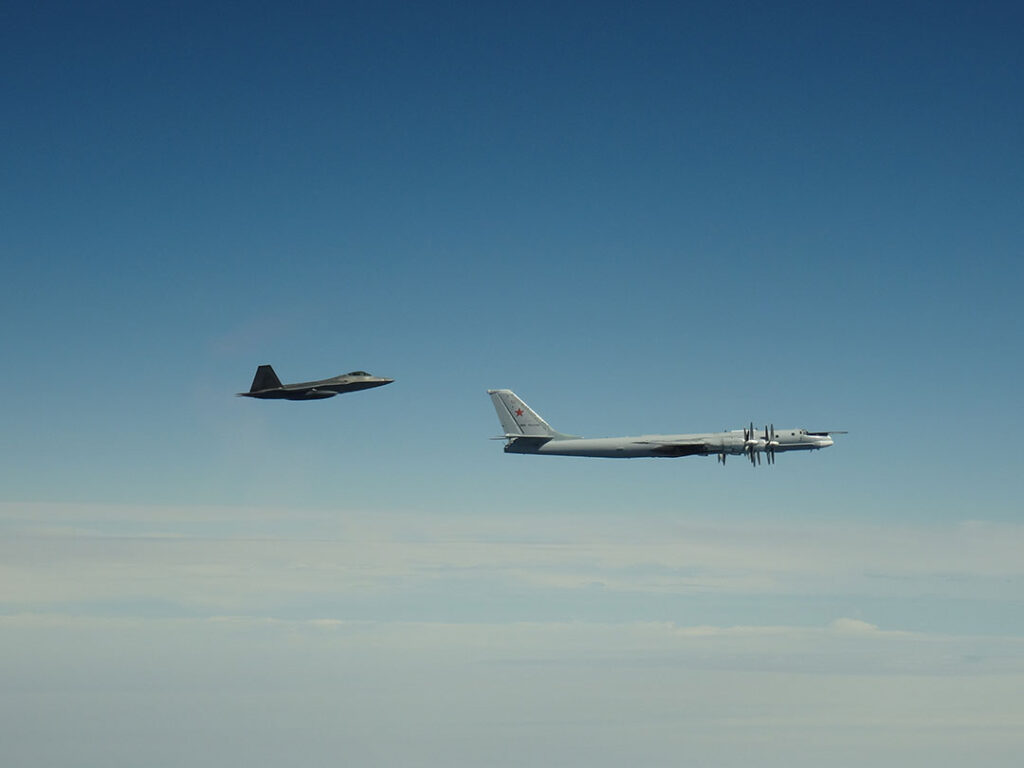THE WATCH staff
As the threats to the homeland become more diverse, the United States is broadening its approach to national defense.
President Joe Biden, senior military leaders and Department of Defense (DOD) publications have called this principle “strategic competition,” especially in regard to the rapidly changing Arctic region and to the People’s Republic of China (PRC).
Biden, in February 2021 at the virtual Munich Security Conference, said of the PRC: “We must prepare together for a long-term strategic competition.”
The DOD, in its fiscal year 2022 budget, said its strategic approach addresses “threats such as climate change, COVID-19 and extremism; makes smart and disciplined choices regarding our national defense, particularly by aligning our resources to evolving threats; [and] addresses strategic competition with China through calculated defense investments.”
Gen. Glen D. VanHerck, commander of U.S. Northern Command (USNORTHCOM), said in a July 28, 2021, press briefing that the United States had “entered an era of new and renewed strategic competition” with the PRC and Russia. In the past, this relationship with “peer competitors” was called the “great power competition.”
(Pictured: A U.S. F-22 Raptor intercepts a Russian Tu-95 Bear near the coast of Alaska in 2020.)
Defense Secretary Lloyd Austin, in a June 2021 Force directive, called the PRC the “No. 1 pacing challenge” for the United States. Still, Austin has emphasized that strategic competition with the PRC doesn’t mean confrontation or that it must lead to conflict.
VanHerck elaborated on this challenge in an article for Issue 101 of Joint Force Quarterly in April 2021 by saying that in the past three decades, the U.S. focused on projecting power forward to confront “rogue regimes, violent extremist organizations and other potential adversaries.” He said that this led to “tactical thinking” against individual actors, rather than the strategic thinking necessary to confront and compete with peer competitors.
The U.S. military “must shift away from focusing on conflict and create deterrence during competition,” VanHerck said his July 28 press briefing.
He went on to sum up this philosophy:
“We must outpace our competitors by accelerating our own efforts to transform our culture, including factoring in homeland defense into every strategy, every plan, force management, force-design decision, as well as aspects of acquisition and budget so that we can deter in competition, de-escalate in crisis and if required, defeat in conflict.”
With homeland defense thus encompassing U.S. military strategy, the rapidly changing Arctic becomes an even more important arena.
“When we talk about strategic competition, well, the Arctic is one of those places that is ripe for it,” Austin said at a July 24, 2021, news conference at Eielson Air Force Base in Alaska. “As the permafrost melts, the Arctic will increasingly become a theater for resource competition and even instability.”
An integrated approach is key to meeting such challenges, according to Austin.
“We need resources matched to strategy, strategy matched to policy, and policy matched to the will of the American people,” he said in a March message to the Force.
IMAGE CREDIT: NORTH AMERICAN AEROSPACE DEFENSE COMMAND

